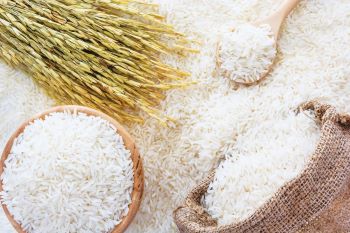KANSAS CITY — Gene-editing technology may change the food and agricultural industries by increasing yield, reducing the use of chemicals and reducing greenhouse gas emissions, including in commodity crops like wheat, soybeans and canola, said Rory Riggs, chief executive officer of Cibus Global Ltd. It could lead to the creation of more ingredients that fit into the sustainability plans and goals of food companies.
“It’s almost an analog-to-digital moment,” Mr. Riggs said, calling the gene editing of plants “a new breeding industry.”
Gene editing, which involves methods such as CRISPR-Cas, is not the same as genetic modification in which a new gene is placed into a plant, Mr. Riggs said.
“If your traits were indistinguishable from what could occur in nature, that’s what we want,” he said. “We want to be able for people to go in and make changes in plants. We trick the cell’s own system into making the change we want. So the changes we do are indistinguishable from what happens in nature. At no part in our process do we ever integrate any foreign material. That’s really the big breakthrough.”
Cibus developed a Rapid Trait Development System, or RTDS, of proprietary technologies that integrates crop-specific cell biology platforms with a series of gene-editing technologies to enable a system of crop-specific precision breeding.
The RTDS’s Trait Machine could shorten the time required to develop plants that provide renewable ingredients, including replacements for fossil fuels in jets and alternatives for palm oil or palm kernel oil. The RTDS addresses the sustainability of farming by increasing crop yields and reducing inputs such as fungicides, herbicides, pesticides and fertilizer, according to Cibus, which has offices in San Diego, New York and Breda, The Netherlands.
“The idea of this new gene-editing technology is that traits can be developed faster than with conventional breeding,” Mr. Riggs said. “I’m not sure you’ll solve a lot of these diseases with conventional breeding.”
One trait provides tolerance to white mold (Sclerotinia), a fungal pathogen that negatively affects 14% to 30% of canola oil/seed rape annually. Cibus will address other crops as well.
“Rust in wheat is what everybody wants to solve,” Mr. Riggs said.
Cibus uses CRISPR-Cas and other gene-editing tools.
“We use it as a cutter,” Mr. Riggs said. “In the grand scheme of things, CRISPRs don’t edit. They cut. CRISPR is not the (gene-editing) technology. CRISPR is just the tool to allow gene-editing technology to be more efficient.”
Other gene-editing efforts are coming in cacao, corn and rice.
Reducing cadmium in cacao
In cacao, gene editing could reduce the amount of cadmium, a heavy metal that causes health problems when used at certain levels, from the trees. Scientists are investigating how biotechnology may help lower cadmium levels in soil worked by Colombian cacao farmers. The scientists receive funding from Cacao for Peace, a project of the US Department of Agriculture’s Foreign Agricultural Service and funded by the US Agency for International Development (USAID). Cacao for Peace supports rural economic development through cacao research, development, innovation and market access.
 Photo: ©BILLIONPHOTOS.COM — STOCK.ADOBE.COM
Photo: ©BILLIONPHOTOS.COM — STOCK.ADOBE.COM
The scientists are using genome editing to make changes to the cacao gene responsible for cadmium absorption from the soil. The genome-edited plants would absorb less cadmium, resulting in chocolate having lower levels of cadmium.
Scientists at the Alliance of Bioversity International and the International Center for Tropical Agriculture (CIAT), the USDA’s project partner in Colombia, have developed nine genome-edited cacao lines. They are testing a genome-edited cacao rootstock for reduced absorption of cadmium. Plans involve transplanting the genome-edited cacao plants from the greenhouse into soils brought in from cacao-producing regions of Colombia, a country that has more than 2.8 million hectares (6.9 million acres) of land suitable for cocoa growth.
Protecting corn and rice
Corteva Agriscience, Indianapolis, developed a gene-editing technology that adds protection to corn hybrids advancing through the company’s research and development pipeline. Proprietary technology packages multiple disease-resistant native traits into a single location in the gene to address North American corn diseases. Northern leaf blight, Southern rust, gray leaf spot and anthracnose stalk rot combined cost North American corn growers over 318 million bus of production in 2021, according to Corteva.
“The National Corn Growers Association supports farmer access to innovations, including those developed through gene editing, that improve corn yields and quality and decrease threats from pests and environmental stressors,” the National Corn Growers Association said.
 Photo: ©NAVINTAR — STOCK.ADOBE.COM
Photo: ©NAVINTAR — STOCK.ADOBE.COM
The plant-breeding approach potentially could be scaled to other crops, according to Corteva.
A review of gene-editing techniques suggests the CRISPR-Cas (clustered regularly interspaced short palindromic repeats/Cas) method could benefit rice crops threatened by climate change. The study was published March 3 in CABI Reviews. Researchers from the Federal University of Pelotas in Brazil found the CRISPR-Cas tool was efficient in gene editing in studies related to yield, tolerance to biotic stresses and abiotic stresses, and rice grain quality.
The study projected a 50% increase in rice consumption by 2050, which would mean demand as high as 1.125 billion tonnes. Biotic stresses like viruses, bacteria, fungi, nematodes, pests and weeds along with abiotic stresses like drought, submergence, salinity, heat, cold and heavy metals limit rice production.
“The high potential of CRISPR-Cas9 editing, for instance, has aided in the development of broad-spectrum resistance against bacteria, fungi and viruses by silencing susceptibility genes and the insertion of resistance genes,” said Antonio Costa de Oliveira, PhD, lead author of the study. “In this sense, CRISPR-Cas9-mediated genome editing has made it possible to introduce mutations in three promoters of the SWEET gene that resulted in rice lines with broad-spectrum resistance to Xanthomonas oryzae pv. oryzae (Xoo).”





